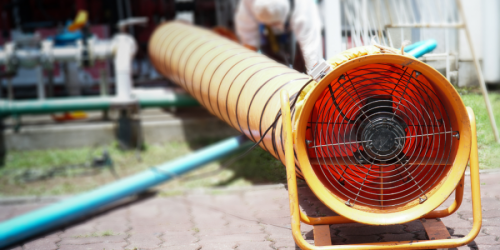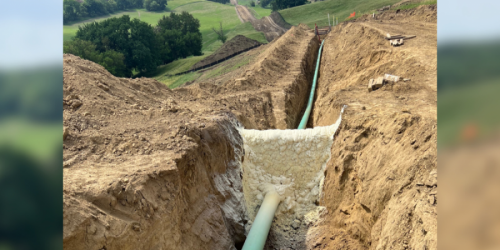Q&A Forums
Does Heat Rise? Post New Topic | Post Reply
| Author | Comments |
|---|---|
|
Dave Strnad
Posted: Jun 20, 2007 06:42 AM
|
Does Heat Rise?
Does heat rise or radiate up or is it just hot air that rises? As I understand heat travels equally in all direction it is just the hot air that rises because it is less dense. The reason that I ask is why in a building that is air sealed top to bottom with spray foam should the ceilings be insulated more than the walls? Most homes I spray have close to the same wall sqft as ceiling sqft, wouldn't you want to spray both to optimum thickness? Anyway a customer brought this up, at first I said that you insulate the ceiling more because heat rises, but then After thinking about it I'm not sure if that is completely true. Any Thoughts
|
|
mason
Posted: Jun 20, 2007 08:47 AM
|
Dave, It is not that simple, heat does not travel equally in all directions. There are 3 methods of heat transfer, conduction, radiation and convection. Each transfers heat different ways. The following are scientific descriptions of these 3 methods of transfer followed by my observations and explanations. (sorry about the technical aspects but I want to be accurate. Text in quotes comes from website http://www.efunda.com/formulae/heat_transfer/home/overview.cfm) Conduction; "Regions with greater molecular kinetic energy will pass their thermal energy to regions with less molecular energy through direct molecular collisions." This method requires direct contact with another material that is hotter than the other. The heat will transfer to the colder surface. The R values listed on a insulation fact sheet are determined by measuring conduction and do not take into consideration radiation or convection. Radiation: "All materials radiate thermal energy in amounts determined by their temperature. When temperatures are uniform, the radiative flux between objects is in equilibrium and no net thermal energy is exchanged. The balance is upset when temperatures are not uniform, and thermal energy is transported from surfaces of higher to surfaces of lower temperature." In other words everything and everybody radiates heat to some degree. The hotter material will radiate its heat to a colder material. So in an attic, in the summer, heat will radiate into the colder rooms below and in the winter heat from inside the building will radiate into the colder attic. Convection: "When heat conducts into a static fluid (such as air) it leads to a local volumetric expansion. As a result of gravity-induced pressure gradients, the expanded fluid parcel becomes buoyant and displaces, thereby transporting heat by fluid motion (i.e. convection) in addition to conduction. Such heat-induced fluid motion in initially static fluids is known as free convection. For cases where the fluid is already in motion, heat conducted into the fluid will be transported away chiefly by fluid convection. These cases, known as forced convection, require a pressure gradient to drive the fluid motion, as opposed to a gravity gradient to induce motion through buoyancy" For our purposes, it can be simply stated that hot air rises and cold air falls. This creates convective currents that reduce insulation efficiency significantly in attics. Particularly with fibrous insulation that allow free air flow. It is less significant with SPF but still exists. The convective and radiation effects are why insulation is greater in attics and ceilings and more so in colder climates where the convective currents are more pronounced. Hope it wasn't too confusing. |
|
Dave Strnad
Posted: Jun 20, 2007 02:41 PM
|
That you for your response, I am still a bit confused because based on your definition of convection: convection should not apply to spray foam unless air passes through it. |
|
mason
Posted: Jun 20, 2007 06:43 PM
|
Dave, It depends on how cold or hot the surface of the SPF is on the underside of the roof deck. A room totaly sealed with SPF can have convective currents if heat is coming into the room and meeting a cold surface. So, the thickness of the foam and the differences in temperature between the outside and the inside will determine the degree of convective currents. One inch of foam in a cold climate woould not prevent convective currents but 3-5 inches most likely would. |
|
Gerry Wagoner
Posted: Jun 20, 2007 10:01 PM
|
Your physics teacher will tell you that heat does not rise. Warm air rises. olger |





























